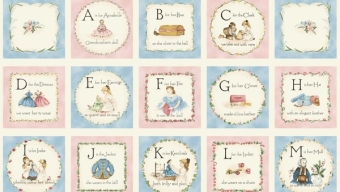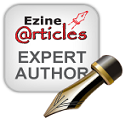Ask Kytka Archives: January 1, 2003
Q: How do I introduce the Letters of the Alphabet, Waldorf style?
A: “I have come up with images, stories and activities for only about half of the alphabet. Is there an established Waldorf curriculum for this?”
Letter writing is presented in a lively pictorial way with the help of fairy stories. “S” may be a fairytale snake sinuously slithering through the grass on some secret errand. The teacher draws on the chalkboard, showing how the letter is embedded in the picture, how perhaps the W is hiding in the drawing of the waves. The children draw the letter in the air with their hands and on the floor with their feet; their whole being participates in the writing experience. Then the children make their own pictures of waves, and then W’s, creating an illustrated book as each letter is presented and experienced.
In Waldorf education, the letters are presented as pictures which appeal to the child’s imagination. In reality the letter is clothes in the picture…the picture is the key. All letters of the alphabet were once pictures themselves. Are pictures ever drawn on rigid lined paper? (And coloring books are NOT pictures!) Additionally, lower case letters came much later – so we ALWAYS begin with capital letters ONLY.
“Letters can also be introduced through gestures that express their sound. A W can be derived from the undulating movement of a wave, or an S from the rushing movement of the wind.” (quote from Rhythms of Learning)
Note on forcing the letters: “It is thoroughly unnatural to require a child during the sixth or seventh year to merely copy the signs that we, in this advanced stage of civilization, now use for reading and writing. If you consider the letters we now use for reading and writing, you will realize that there is no connection between these letters and what a child of seven is naturally disposed to do. Remember, that when human beings first began to write they used painted or drawn signs that reproduced things or occurrences in the surrounding world. Or they wrote from will impulses, so that forms of writing expressed processes of the will – cuneiform characters, for example. Today’s entirely abstract form of letters, which the eye must gaze at or the hand form, arose from picture writing. When we confront a young child with such letters, we are bringing something alien, something that in no way conforms to the child’s nature. Let us be clear about what it means to “push” a foreign body into a child’s organism. It is just as though a child, from the very earliest years, were being habituated to wearing very small clothes that do not fit, and therefore damage the child’s organism. Today observation tends to be superficial, and people are even unaware of the damage done to a child’s organism by simply introducing reading and writing in a wrong way.”
~ Rudolf Steiner, The Spiritual Ground of Education
Here are a few examples
- Think of a picture that LOOKS like the letter you are drawing. Example F = fish, W = wave, M = mountain, S = snake
- Build a story around that image
- Make up a simple one or two line poem, this is called a consonant verse.
F = flirting fishes flashing freely
W = Over wind swept waves, the white seagulls wildly sweep.
M = Many mighty men mount the mighty mountain
S = Six silver snakes silently slithered over the soft sea of sliding sand.
These verses and images are acted out in story, drama, rhyme, song, verse, poem and movement as well as drawing, painting, modeling, etc… The letter forms must be “alive” for the children to fully experience them and feel them within. The children need to absorb the letter and make it their own…
A wonderful resource of how the letters “come alive” with story can be seen in these two truly WALDORF books. I highly recommend them both for ideas and inspiration!
LMNOP and All the Letters A to Z
A very special Waldorf Alphabet book full of lovely “Waldorf style” art filling each page.
Each consonant and vowel comes alive with it’s own unique qualities in the world… a lovely book!
I also strongly recommend From Imagination to Form: The Letters A – Z
The stories used should be the fairy tales appropriate for Grade One.
Here is a list:
The Complete Grimm’s Fairy Tales
East of the Sun and West of the Moon
Featherlight
Seven Year Old Wonder Book
Fairy Worlds and Workers
Sam Luckless: The Unlucky Lad
Rapunzel: A Fairy Tale
The Land of the Blue Flower
The Wonderful Adventures Of Nils
Little Brother and Little Sister
Beauty and the Beast
Cinderella
Background for Lessons
The Alphabet: Rudolf Steiner’s Detailed Explanation of the Meaning of Letters
Parental Ideas & Comments
I was disappointed by LMNOP – I got some ideas from it, but didn’t use a lot of it. For memory I think I found the verses, in particular, disappointing. I found the pictures on the cover of “Putting the Heart Back into Teaching” more inspirational, and wished they had covered all the alphabet, instead of just half a dozen of so letters. We used: E eagle I incorporated it into the body of a king and used the Dorothy Harrer story “The Secret Name of the King” (which turns out to be “I”), L ladle, P Pied Piper the curve of his arm going up to meet the recorder in his mouth forms the round of the P, Q Queen with her cloak billowing out, into a round shape around her, and the tail of it to one side forming the “tail” on the Q, R the spinning wheel from Rumplestiltskin, U unicorn with the tail forming a U shape, X xylophone with the two sticks crossed, Y yabbie with the claws showing the Y shape, Z zigzags of lightning, K king with his straight body, and arm forming the top arm of the K and leg stretched out forming the bottom arm of K (almost like he’s marching). Which is probably what you’ve already got for K.
Images I have so far are: A -angel, B – butterfly, C – cave, D – dragon, F – fish, G – goose, H – house, J – juggler, K – king, M – mountain, N – needle and thread, S – snake, T – tree, V – vase or valley, W – wave.
I followed Eric Fairman’s ideas in his book A Path of Discovery book 1. (Not very original I’m afraid). Anyway here is what I used: L – ledge, p – pond, q – quoka, r-river, x – x makes the spot on a map, y – yacht, z – zig zag path through a forest. I didn’t use these for the vowels but found them in a book called Teaching Children Writing by Audrey McAllen: Long vowel sounds A – angel E – eagle, I -Idonia (princess) O – opal – U – Unicorn, For short vowels a – apple, e – elephant, I – imp, O – orange, u – umbrella.
Parental Recommendations
Several parents shared some books they have been using which may be worth checking out! Their suggestions and their comments follow:
I just love this book. I copied this prom the book description: Roses are red, violets are blue . . . and they’re only two of the flowers in this book of bright colors and delightful information. Young readers will be fascinated to find out what flowers can be used to make a doll, which flower flavors tea, and which flower farmers feed to chickens. Author Jerry Pallotta and illustrator Leslie Evans have collaborated to produce a stunning bouquet of words and pictures about the world of flowers-one of natures most beautiful gifts. ~Kati
I wanted to let everyone know that I found a really neat book at the library, The Alphabet Atlas by Arthur Yorinks.
This book has each letter of the alphabet depicted in a beautiful way, relating to the country which begins with that letter (for instance J is for Japan and has a bamboo drawn in the middle with leaves at the end of the J and the bamboo). There is an interesting note about each country. On the opposite page there is a picture of the country and around it beautiful pictures of things related to that country, almost like a collage (very artistic). It is a lovely book and since we love geography it really is special. Highly Recommended.
Addition: Wow, I just noticed something about this cool book (read review below). The ‘collage’ type art depicting the country and related cultural things is actually pictured as a quilt! You can see the thread marks around the countries and the different pieces of ‘fabric’ which make up the cultural artifacts. Okay, that is too cool :). What a great way to study geography, making small geography/cultural quilts. Oh my, I am totally inspired. ~Melissa
I love The Handmade Alphabet by Laura Rankin.
It’s a book showing the hand positions for signing the alphabet, but it also has each letter on the page, and the illustrations are gorgeous.
The Hole by the Apple Tree: An A-Z Discovery Tale
Harold and his friends embark on a fairy-tale adventure through the alphabet and encounter giants, pirates, Snow White, and other people and things that begin with the letters from A to Z.
I found a really great one at the library today, too. It’s Anno’s Alphabet . Each letter is illustrated as being built from wood, and the page opposite has old-fashioned objects starting with that letter, like A is anvil. The illustrations are really well done. The fascinating part to me was when I realized that the pencil-drawn borders around each page not only had other objects hiding in them, but that each was a different plant that started with that letter. I’m just getting into gardening, and it was fun to recognize the ones I knew, like N for narcissus. Luckily at the back there was a legend so I could look up the ones I didn’t know. It was fascinating. (Sometimes I wonder if I enjoy these picture books more than the children!) ~Rachel
Several Alphabet Presentations OTHER THAN “A is for apple”
- A Spirited Alphabet: From A to Z
- Pioneer Life from A to Z
- Prairie Primer: A to Z
- Musical Instruments from A to Z
- Everyday Structures from A to Z
- A Is for Africa
- Discover America State by State Alphabet Books
- My Spiritual Alphabet Book
- Flower Fairy Alphabet
- Flower and Fairy Alphabet Coloring Book
- A is for Appalachia
- Geography from A to Z
- The Wonders of Me from A to Z
- Arctic Alphabet: Exploring the North
- Wishing You.. Blessings from A to Z
- Christmas Long Ago from A to Z





















